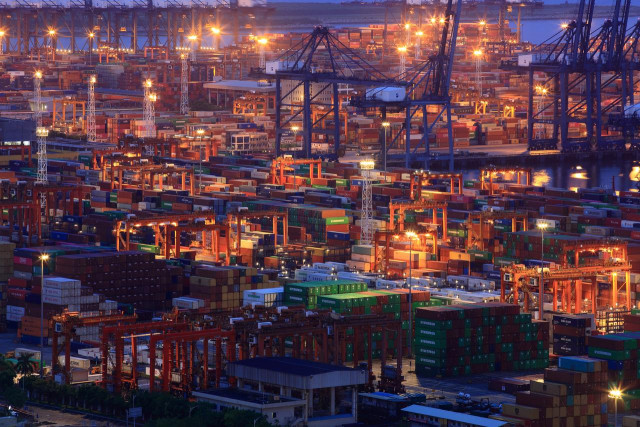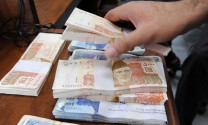Analysing Pakistan’s export push
Product and capacity upgrade is essential for boosting exports in long run

Trade figures published by the Pakistan Bureau of Statistics (PBS) in early January reveal a further increase in both exports and imports in December 2020.
Exports were at $2.352 billion in the month and imports surpassed $5 billion. The month-on-month growth in exports was 8.19% and in imports it was 16.79%. The year-on-year growth in exports was 18.31% and in imports it was 25.25%.
However, the trade deficit increased 25.55% month-on-month and 32.04% year-on-year. This increasing trend has generated significant interest among government officials and economic experts, alike.
The prime minister recently tweeted on the growth in exports in November and December 2020 comparing it to the poor performance of Pakistan’s major South Asian counterparts. The resultant trend in export and import composition of Pakistan will be crucial as businesses take advantage of the relatively limited impact of the pandemic that has otherwise severely impacted the global economy.
The State Bank of Pakistan (SBP) releases data of export receipts and import payments on a monthly basis. It reported a monthly increase of 13.6% in export receipts but a period-to-period decline of 7.1%.
Similarly, it reported a monthly increase of 17.4% in import payments and a period-to-period decline of 1%.
The SBP defines export receipts as “the money value against exports of goods abroad either realised in foreign exchange or payment through non-resident rupee account” and defines import payments as “the import of services contains all payments through banking channels for services provided by non-residents to residents”.
On the other hand, the PBS provides information using customs records, which is based on physical movement of goods across Pakistan’s boundaries. However, the data reported by the PBS and SBP is likely to differ due to variation in valuations, coverage, timing and classification of exchange records.
It is important to note that export proceeds and import payments may lag behind physical movement of goods, resulting in discrepancies between the data reported by the PBS and SBP. PBS data is more relevant when discussing the value and volume of physical trade.
The resurgence in exports is extremely crucial for the economy of Pakistan as it suffered from its stagnation in the past decade.
Lagging behind peers
According to the World Bank’s World Development Indicators, Pakistan reported one of the lowest levels of exports as a percentage of gross domestic product (GDP) in the world at 10.1% in 2019.
Comparatively, the lower middle-income countries averaged 24.7%, the South Asian countries averaged 17.5%, while even more fragile states labelled highly indebted poor countries averaged 24.4%.
On the other hand, although imports as a percentage of GDP were almost twice the level of exports, they were lower than those of the counterparts. The lower middle-income countries averaged 29.8% in 2019.
One of the major recurring challenges for economic policymakers is the balance of payments crisis that engulfs the economy after every few years.
The lack of foreign currency reserves accumulation, particularly during the period when Pakistan is not receiving financial assistance from the International Monetary Fund (IMF), puts the economy in a tailspin as it struggles to meet payment obligations and ultimately needs IMF assistance to finance them.
Considering the ratio of import payments to total forex reserves under the control of monetary authorities, which shows the number of months a country can pay for imports of goods and services, Pakistan reported a ratio of 1.9 months in 2018. This improved to three months in 2019.
Lower middle-income countries reported an average of seven months in 2019, while South Asian countries averaged eight months.
Total forex reserves (including gold) held by the monetary authorities in Pakistan stood at $11.84 billion in 2018. They were 12.7% of the total external debt. Comparatively, the lower middle-income countries reported 57.7%, while South Asian countries reported 63.9%.
This highlights the precarious condition of total reserves reported by Pakistan in 2018. With reserves rising and imports decreasing since 2018, the number of months covered by reserves for imports of goods and services and reserves as a percentage of total external debt have increased, indicating a relatively stable position on the external front.
Although imports peaked in 2018, it was mainly driven by CPEC-related investments, primarily used for domestic consumption.
Imports of unfinished products and capital goods to produce exportable products are necessary, particularly when there are insufficient resources available domestically.
Global competitiveness
According to statistics of the International Trade Centre’s Trademap.org, Pakistan reported greater imports of textile machinery than imports by Bangladesh and Vietnam in 2003. The result from the boost in imports of textile machinery was evident in the growth rates of exports reported in subsequent years.
Imports of textile machinery into Pakistan in 2019 were lower than those into Bangladesh and Vietnam. Product and capacity upgrade is essential to boost exports in the long run, particularly if Pakistani exporters are to enhance their global competitiveness.
There has been a surge in imports of raw cotton, which increased approximately 500% in the first five months of FY21 over the same period of FY20. Imports of synthetic fibre showed a growth of 25%.
Therefore, the demand for raw material and intermediate goods increased as textile exporters experienced a surge in their orders as well as made up for the fall in domestic cotton production.
In essence, low exports are a major concern for Pakistan. Even after accounting for its large population and the inflow of remittances to buffer the imbalance in current account, exports as a percentage of GDP are low.
The balance of payments crisis is driven primarily by lower exports that fail to accumulate much-needed foreign currency reserves and ensure stability in the external account.
The current upward trend in exports is encouraging. However, there is a need to ensure that this trend continues in the long run. This will require not only more trade promotion activities but will also require exporters to successfully participate in global value chains.
The writer is the Assistant Professor of Economics & Research Fellow at CBER, IBA
Published in The Express Tribune, January 11th, 2021.
Like Business on Facebook, follow @TribuneBiz on Twitter to stay informed and join in the conversation.



















COMMENTS
Comments are moderated and generally will be posted if they are on-topic and not abusive.
For more information, please see our Comments FAQ